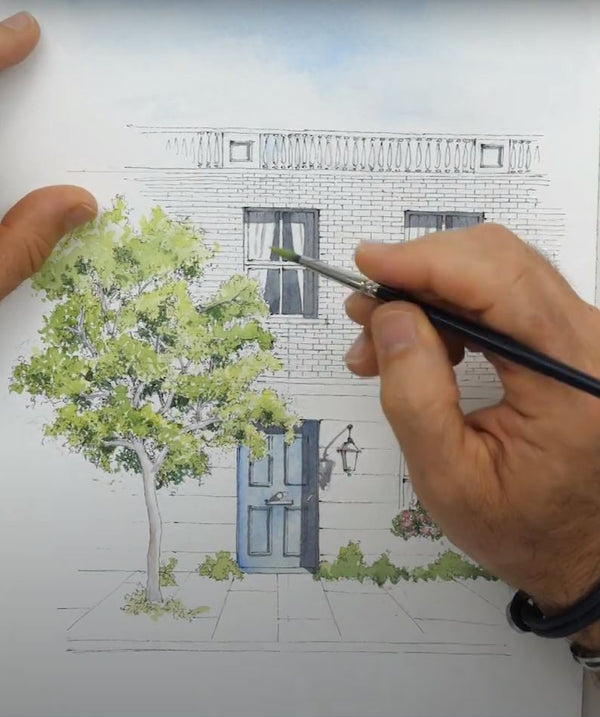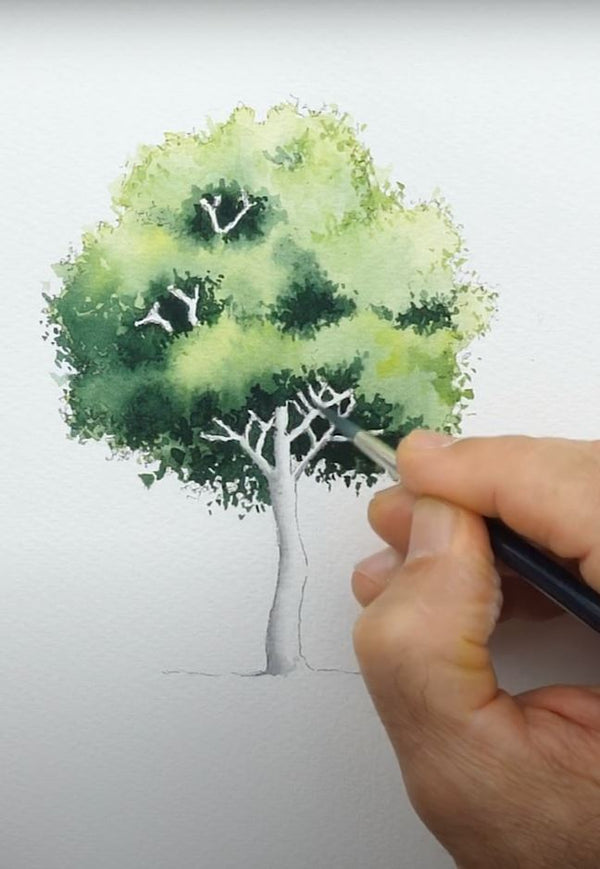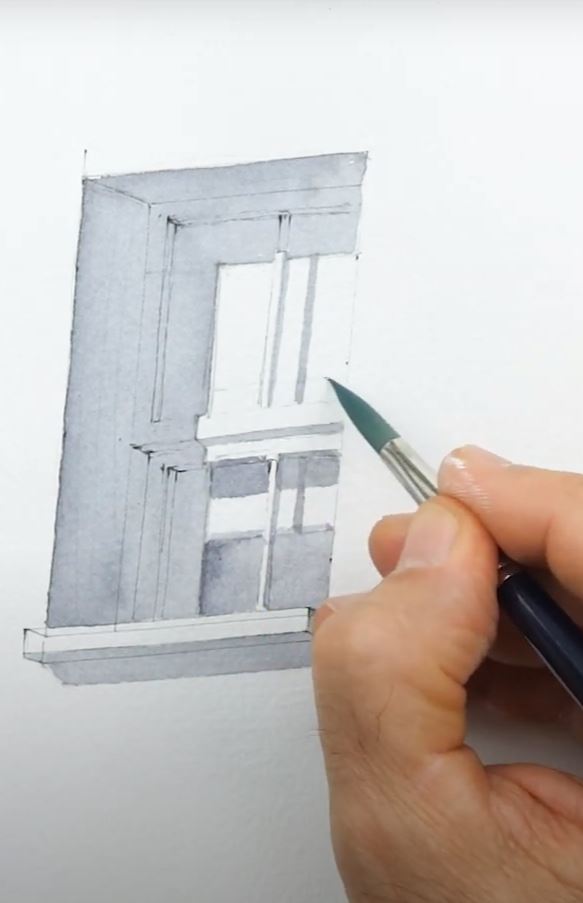
Beginners Introduction to Watercolour - 9 Unit Course
Sale price
£75.00
Tax included
Shipping calculated at checkout
In stock
Beginner's Intro to Watercolour - Structured Learning - Level 2
In level 1 we covered the basic techniques of proportion, perspective and general sketching. The next step is to add colour and vibrancy to our drawings. In this level we will cover watercolour washes creating depth and making our drawings more exciting.
2.1 Materials & colours
It is important to understand the tools & materials required for the best result. In this unit we will go through some of the essential tools and how to use them. We will also cover basic colour mixing & washes and how to avoid messy hard lines.

2.2 Basic leaves & foliage
Foliage is an Integral part of many urban sketches and drawings. It is important to get the colour and the depth right as they can really enhance your results. This unit will focus on the basic techniques to get great results and hopefully prepare you for more complex versions in the future. We will also have a quick look on how to integrate the foliage into a very simple drawing using a door and a window.

2.3 Summer & autumn trees
I have been asked many times to run a demo on this subject, as a number of people struggle with the structure and depth needed for a pretty tree. In this unit we will look at a number of useful tips on how to draw a tree, use the right wash techniques and add depth & shadow. We will cover a summer tree in detail and give further tips for an autumn tree.

2.4 Shadows
The study of shadows can be very detailed and quite technical making it a hard and long-winded topic. I thought it would be very useful to look at some simple techniques to add shadows to our drawings without getting completely bogged down with technical details. We will look at how to create simple shadows and what colours we need to use for simple, yet very effective results.

2.5 Doors
The majority of urban sketching drawings will have a door in them in one capacity or another. They can end up being quite flat and lacking in depth. It is important to spend some time learning the right techniques to draw a nice door and how to create the variety of values for depth. This unit is also very useful to practice the colour washes learnt in the previous units.

2.6 Warm & cool colours
The concept of warm & cool colours is a very interesting one and is not particularly scientific, therefore different artists achieve different looks by combining these types of colours. We will have a look at what they mean and how to apply them in a basic drawing to achieve more depth and variety. I would highly encourage you to experiment a fair amount after going through this unit to understand what you feel is most pleasing to the eye. As a bonus I thought it would be useful to incorporate single point perspective & foliage for additional practice.

2.7 & 2.8 Little Town House Part 1 & 2
Finally, we can put all of what we learnt in the previous units together and build a complete drawing of a little town house with foliage. I really hope that by doing this unit all the work and effort so far has started to pay off. We will look at a simple imaginary town house with doors, windows and foliage and how they come together and bring the individual elements to life.

2.9 Lanterns
Lanterns are brilliant for practicing lines, simple geometry, colour washes and three-dimensional objects. It is just as well they are really good fun to draw! Lanterns come in all sorts of shapes and sizes, so to keep life simple we are going to look at the basic techniques of drawing a cylindrical lantern and how to create shadows and depth using the colour wash techniques we learnt earlier.










